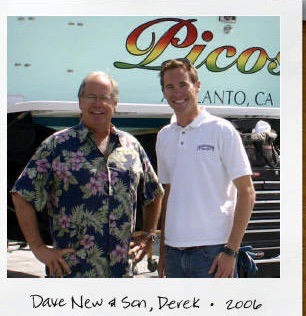 |
| Jackson Willett, owner of Newport Coast Marine Yacht Charters and Powerboat School |
By LEN BOSE
In the world of ever-changing marine insurance requirements, yacht brokers must reach out and become closer with U.S. Coast Guard licensed captains. Gone are the days when a new boat owner can take the keys of a vessel and learn how to operate and maintain a vessel on their own.
If you have just purchased a 35-foot plus vessel, and have never owned or operated a vessel before, you will now be required to have somewhere between 20 or 40 hours of instruction.
Others might never get the knack on how to maneuver a 60-foot vessel through the harbor safely and will require a skipper to pilot it.
For those just entering the yachting lifestyle, they will have two options. One is hiring a skipper to take you out each time you want to use the vessel or two, hiring a skipper to instruct you how to become efficient enough to run and maintain your purchase.
Enter Jackson Willett, owner of Newport Coast Marine Yacht Charters and Powerboat School.
Willett was born in Manhattan, New York City, and sailed in the junior program at the New York Yacht Club, spending his days sailing in the Hamptons, Long Island Sound and Oyster Bay. He holds an MBA from NYU Stern School of Business and a B.A. from Washington & Lee University.
“This is my second career. I was a corporate financial consultant for 15 years and moved to California in 1998, bouncing between San Francisco and LA, then moving back to Newport Beach in 2002,” said Willett.
“I received my 100 Ton Master Captain’s license 10 years ago through the Maritime Institute in San Diego. Then, I started private instruction shortly after while living aboard a Grand Banks 36 for three years in Newport Beach.
“Next, I started as an instructor at OCC teaching their sailing and powerboat courses and quickly observed that many of the powerboat students were inquiring for instruction on their boats.
“So, I started the Newport Coast Maritime Academy three years ago.”
During our interview, it quickly became obvious that Willett is a well-educated person, easily remembering all the different government agencies he has to deal with, while using their initials along with his understanding of the whole marine industry.
He explained the story of how he received his U.S. Sailing Power Boat certification. “U.S. Sailing turned me down three times. Emails and phone conversations were not getting it done, so I flew out to Rhode Island requesting a meeting with senior management. After I made my presentation, U.S. Sailing management loved it, and that’s how I obtained the certification,” Willett said.
The Newport Coast Maritime Academy website can be found at https://ncma-ca.com/. In his bio page there, Willett explains that, “He specializes in training owners and their families to become proficient operators of their vessel and qualify with insurance carriers to command their own vessel.”
He has more than 20 years of experience power cruising and sailing on the East Coast, Southern California, Mexico, and Hawaii and extensive education training.
Best of all, Willett offers a pragmatic and principled approach to teaching all aspects of vessel ownership and operation.
“The Basic Cruising Course is described as a 20-hour program taught onboard your own boat. Starting with a vessel orientation by lifting up every hatch and access cover, going into the engine room orienting the owner with the systems onboard and reviewing all forms of preventive maintenance. Then, reviewing items before departing, while cruising and then on your return. Seventy percent of the course is concentrated on close-quarter maneuvering. We teach them everything about docking, rules of the road, aids to navigation, chart reading, anchoring, emergency procedures and VHF radio operation.”
There are many other courses that can be taken from Coastal Cruising, Night Operations, Electronic Navigation, Maintenance and Basic Sailing to Advanced Sailing.
There is also another hidden pearl of knowledge he gave me. During our interview, we discussed his delivery agreement which he completes before delivering a boat for an owner. Personally, I would have saved a fortune and hours’ worth of grief if I had completed this interview years ago on how to set the terms for a delivery crew.
I was so impressed with the detail of his agreement, that I reminded him that I was available to crew for him anytime the circumstances occur.
If you are considering purchasing a vessel anytime in the near future or looking for a delivery crew, I strongly recommend the Newport Coast Maritime Academy.
Sea ya.
~~~~~~~~
Len Bose is a yachting enthusiast, yacht broker and harbor columnist for Stu News Newport.








